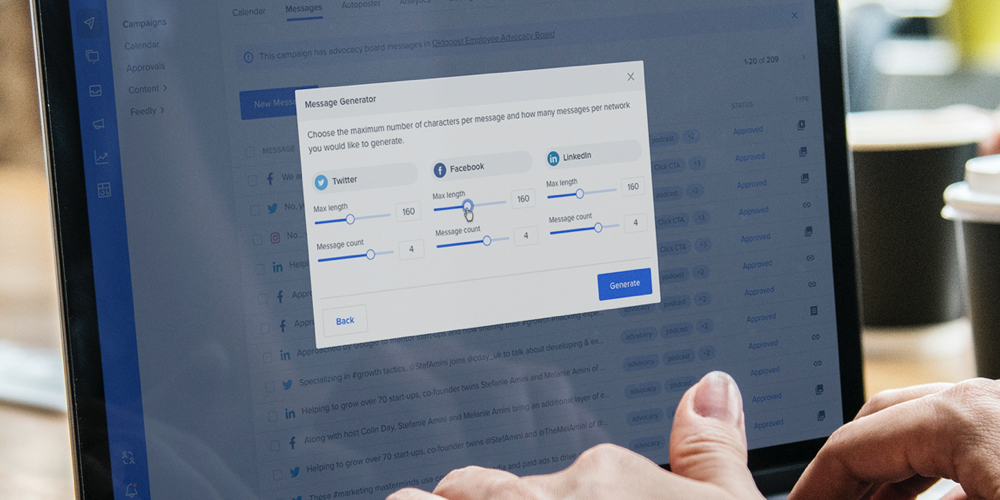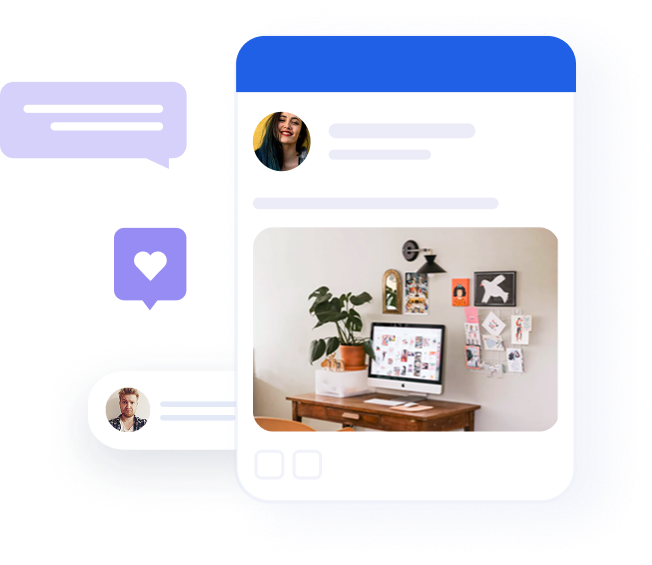How to drive brand growth in large enterprises with the right employee advocacy platform
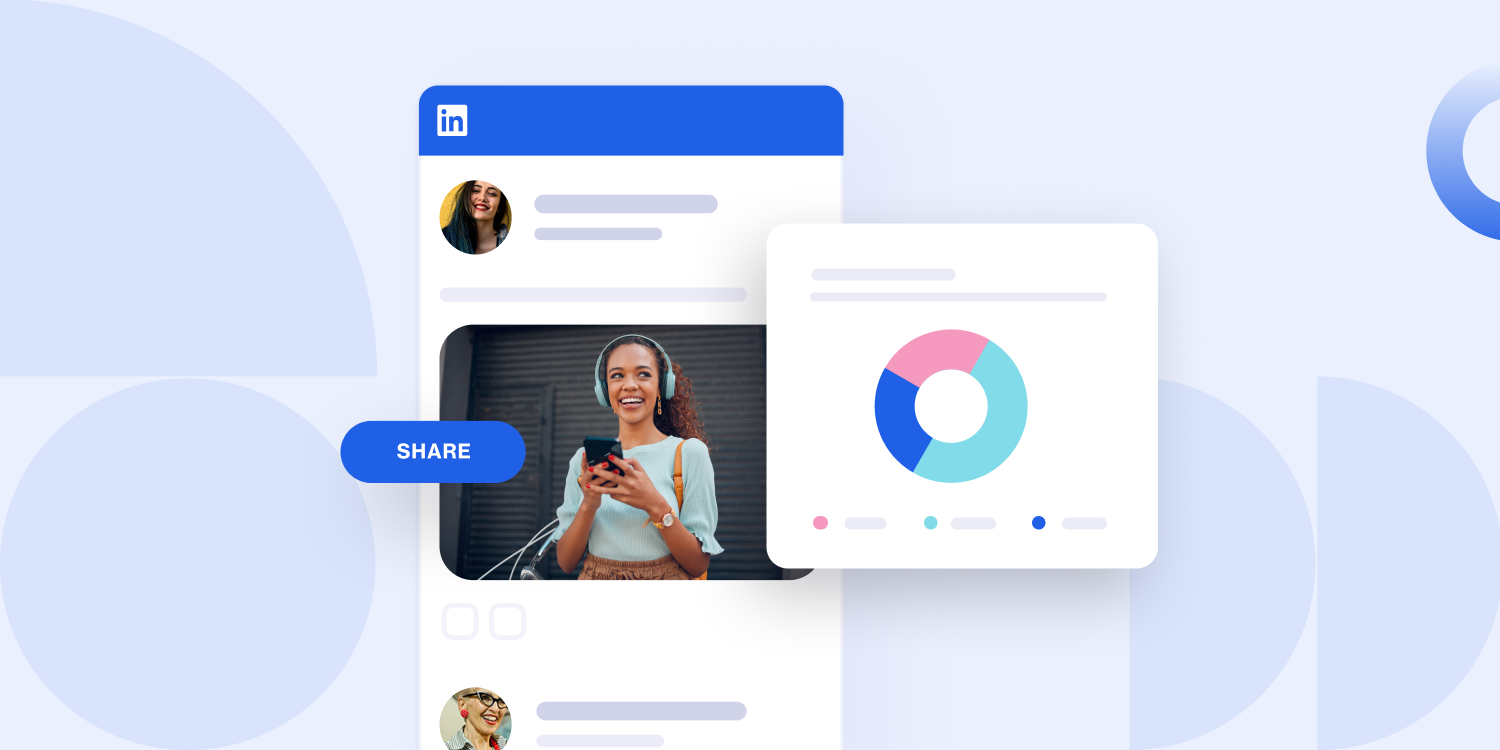
Table of contents
- The importance of employee advocacy for large enterprises
- Designing a scalable employee advocacy strategy
- Engaging and retaining employee advocates
- Leveraging technology to scale employee advocacy
- Measuring and optimizing employee advocacy performance
- Overcoming employee engagement and employer branding challenges in large enterprises
- Summary
Employee advocacy platforms have become a cornerstone of modern B2B marketing strategies. Large enterprises, especially those with 1000+ employees, are increasingly recognizing the power of employee advocates who share company news, industry insights, and thought-leadership content on social media platforms. By empowering employees to amplify brand messaging, enterprises can reach broader audiences and enhance engagement with their messaging better than traditional marketing methods.
However, scaling employee advocacy programs in large organizations presents unique challenges. With employees spread across numerous offices and countries, it isn’t easy to onboard and engage corporate employees, or to ensure that all employees feel connected to the company’s mission. Smaller organizations have the advantage of tighter teams and more direct communication, making it easier to engage employees from the start.
This guide will show you how to leverage employee advocacy software and platforms to scale engagement across departments and regions. By aligning your employee advocacy strategy with your business objectives and empowering employees to share social media posts that resonate with their personal brands, you can transform your workforce into brand ambassadors. We will also explore how companies like Bruker, ComplyAdvantage, and IFS have successfully scaled their employee advocacy programs, driving engagement and results.
The importance of employee advocacy for large enterprises
Amplifying brand reach through employee networks
Employee advocacy offers a unique advantage by leveraging employee networks to amplify brand messaging. Employees sharing content via social media platforms extend your brand’s reach far beyond what traditional corporate accounts can achieve. Research shows that employee-shared posts reach up to 10x more people than corporate posts, making employees the most effective B2B marketing tool.
A prime example of this is Bruker, which leveraged its employee advocates to create a highly successful employee advocacy program. By sharing insightful industry content, employees boosted the company’s visibility, resulting in a 6x increase in impressions and a 4x increase in new followers on LinkedIn. From Expert to Influencer, this reach is unattainable through traditional paid social media campaigns.
Coordinating social media efforts across eight divisions worldwide was a significant challenge. We needed a streamlined process to avoid overlapping posts and ensure alignment.
Alessandro Volpino, Senior Global Digital Marketing Specialist & Coordinator, Bruker
Building a stronger employer brand
Fostering a strong employer brand across multiple offices, countries, and cultures can be challenging in large enterprises. Yet, employee advocacy makes this task more achievable. Employees who act as brand advocates share more authentic insights into company culture, leading to greater trust among potential candidates and clients. According to Finastra, its employee advocacy program helped enhance its employer brand by enabling employees to share their personal experiences with the company’s culture.
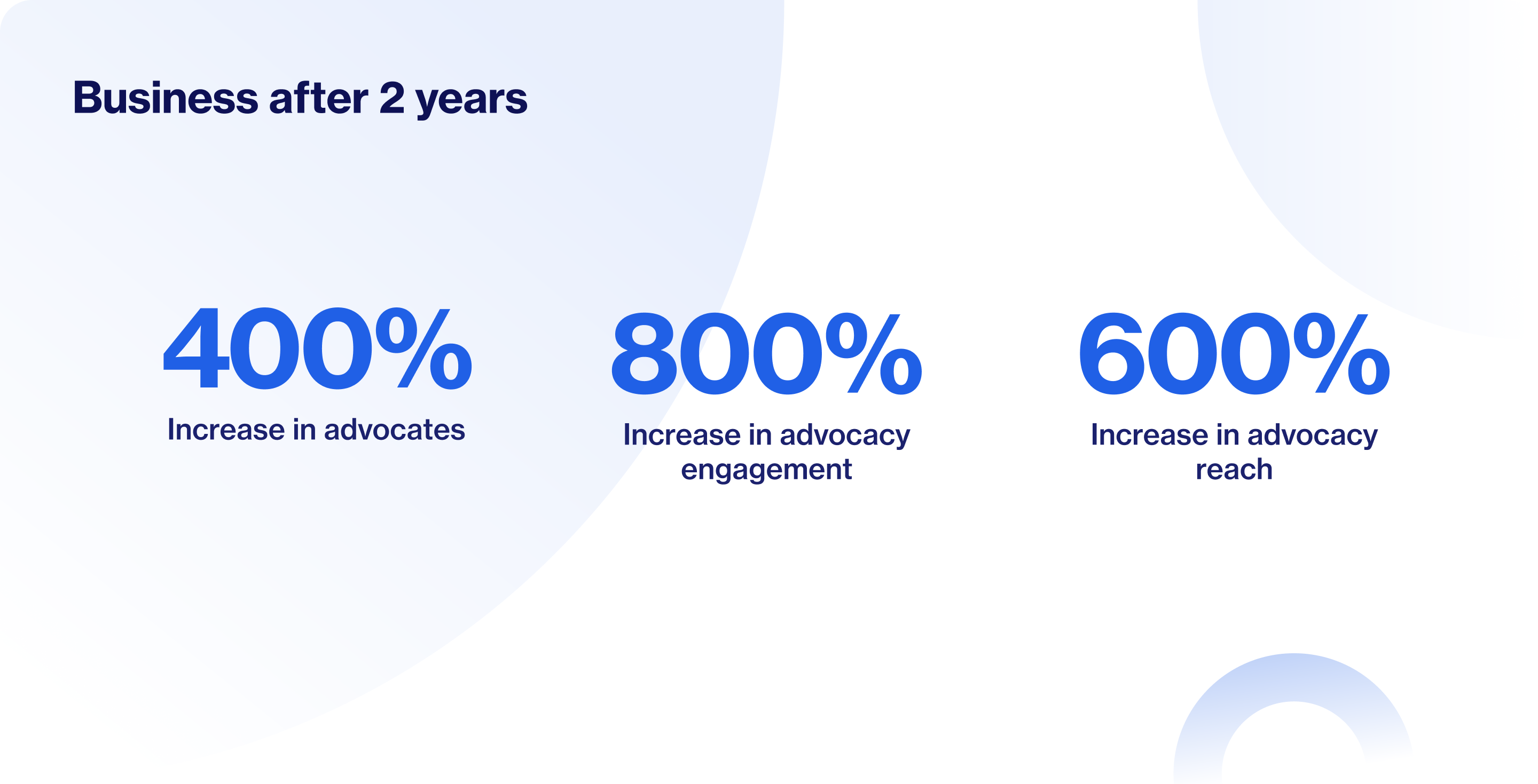
Oktopost helps provide our experts with the perfect tools and content to express our viewpoint. It becomes the secret behind our successful employee advocacy program when we blend this with top-notch training and support. We were able to grow our advocacy reach by over 600% in just two years.”
Joerg Klueckmann, Head of Marketing at Finastra
The program boosted employee morale and attracted top talent. When employees share content related to the company’s salaries and achievements, they increase the organization’s credibility, making it more attractive to job seekers. 44.5% of job seekers are more likely to apply when a current employeeshares the post.
Thought leadership and credibility
Establishing thought leadership is critical for the finance, law, and technology industries. Employee advocacy programs enable employees to share valuable content that positions the individual and the company as experts in their respective fields. This content can include industry insights, case studies, or white papers demonstrating a company’s expertise.
IFS, a global enterprise, has successfully leveraged its employee advocates to establish thought leadership in the IT industry. IFS enhanced its reputation as an industry leader by encouraging employees to share their opinions about news and trends and presenting their knowledge and expertise on social media.
Being able to choose content that resonates with advocates’ specific audiences has led to a notable increase in engagement. This tailored approach has truly amplified our brand’s reach and impact.
Oliver Pilgerstorfer, CMO at IFS
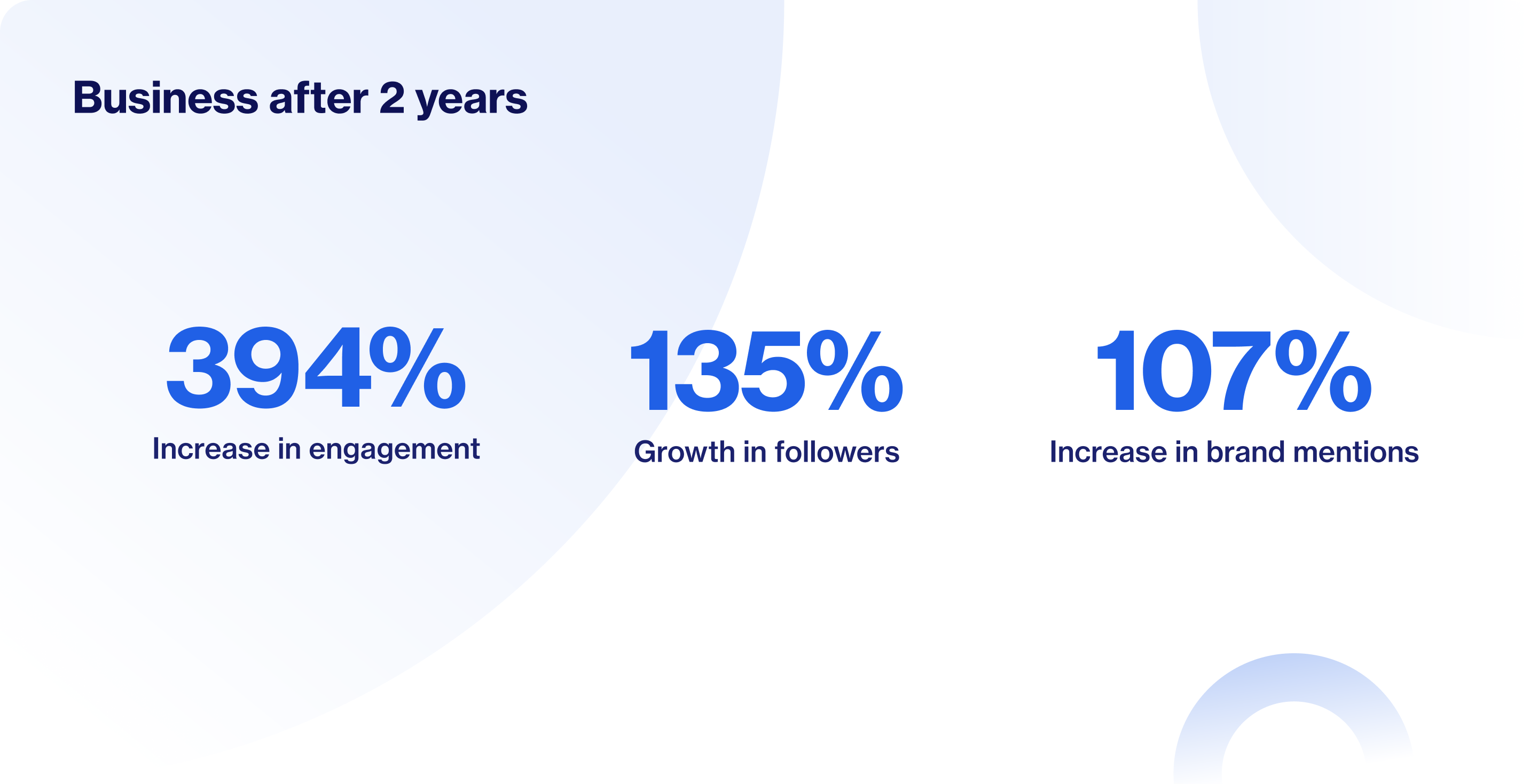
With Oktopost’s AI features, creating authentic content is just two clicks away. This enables our advocates to have an entirely unique post they can go ahead and share with ease.
Oliver Pilgerstorfer, CMO at IFS
Designing a scalable employee advocacy strategy
Step 1: Align advocacy with business objectives
The foundation of any effective employee advocacy strategy is alignment with the company’s broader business goals. Whether the objective is increasing brand awareness, generating leads, or improving employee engagement, a clear employee advocacy plan ensures everyone is working towards the same outcome.
Here are a few examples of potential goals:
- Brand awareness: Increase reach and visibility through employee-shared content.
- Lead generation: Encourage employee advocates to share company news that attracts new prospects.
- Employee engagement: Foster a culture of participation, encouraging employees to contribute their insights and share valuable content.
When employee advocates are aligned with these goals, their contributions can be measured through KPIs such as impressions, engagement rates, and conversions.
Step 2: Selecting the right advocates
Choosing the right brand advocates is crucial for scaling an employee advocacy program. Not every employee will be equally motivated to share content on social media. Identifying employees who are already active on social media platforms, such as those in customer-facing roles or leadership positions, is essential. Employees in these roles often have larger, more relevant networks, which can drive higher engagement and brand visibility.
However, engaging employees from all departments is essential to ensure a broad spectrum of content. For example, sales teams might share customer success stories, while R&D teams can contribute thought leadership articles. By diversifying the types of content shared, you can keep the program dynamic and engaging.
Engaging and retaining employee advocates
Gamification and incentives
One way to increase employee participation in advocacy programs is through gamification. Leaderboards, rewards, and recognition can incentivize employees to share more content and stay engaged. For example, offering rewards such as gift cards or additional perks for top-performing brand advocates will motivate employees to contribute more actively.
Finastra used gamification to encourage employees to compete and share more content, significantly increasing their engagement and advocacy participation.
Personalization and empowerment
Encouraging employees to personalize content is key to ensuring that posts feel authentic and relatable. Rather than simply echoing corporate messaging, employees should be empowered to add their unique voice to shared content. This personalization helps create a more genuine connection with the audience, increasing the likelihood of shared and engaged content.
By providing employees with a content library full of relevant articles and pre-approved content, they can easily find and share posts that align with their brands and the company’s objectives.
Recognition and feedback
Regularly recognizing top employee advocates helps maintain enthusiasm and reinforces positive behavior. Public recognition in internal communications, social media shout-outs, or company-wide meetings can motivate other employees to participate. Additionally, regularly soliciting feedback from advocates will help refine the program and ensure that employees feel their contributions are valued.
Leveraging technology to scale employee advocacy
Choosing the right platform
Selecting the right advocacy platform is essential for scaling employee advocacy in large enterprises. Platforms like Oktopost allow for easy content management, distribution, and measurement. With an integrated employee advocacy tool, employees can quickly access company news, share content, and track their performance, all from one centralized hub.
Using a platform that integrates seamlessly with existing social media management and CRM systems is essential for maximizing the program’s reach and impact. The right tool will enable you to track engagement, manage content effectively, and ensure consistency across different teams and locations.
AI and automation tools
AI-powered tools can streamline the process by suggesting relevant content and automatically scheduling posts. These tools reduce the manual effort required by employees and ensure that posts are shared at optimal times to maximize engagement. Automating routine tasks gives employees more time to engage with their networks, respond to comments, and build relationships.
Cross-channel integration
To get the most out of your employee advocacy software, ensure it integrates with social media management platforms, CRM systems, and analytics tools. Cross-channel integration allows you to measure the full impact of your employee advocacy efforts, from initial engagement to lead conversion.
Measuring and optimizing employee advocacy performance
Setting KPIs and tracking results
To measure the success of the employee advocacy program, you need to set KPIs and track them consistently.
Common KPIs include:
- # of posts shared per week by advocates
- # of posts shared per advocate per week
- Advocate edit ratios to make sure your advocates are personalizing their posts.
- Engagement rates such as likes, comments, shares, and clicks.
- Reach: Track impressions and visibility across social media platforms.
- Leads and conversions: Monitor how employee advocates contribute to lead generation and business outcomes.
Tracking these metrics can refine your employee advocacy plan and improve the program’s effectiveness.
Optimizing the program
Once you launch your advocacy program, you must continuously work on improving it based on performance data. For instance, see when certain content types or topics perform better than others and what your advocates share. Tailor your future content strategy accordingly. Regularly review feedback from employee advocates to make the program as engaging and effective as possible. Master your employee advocacy program.
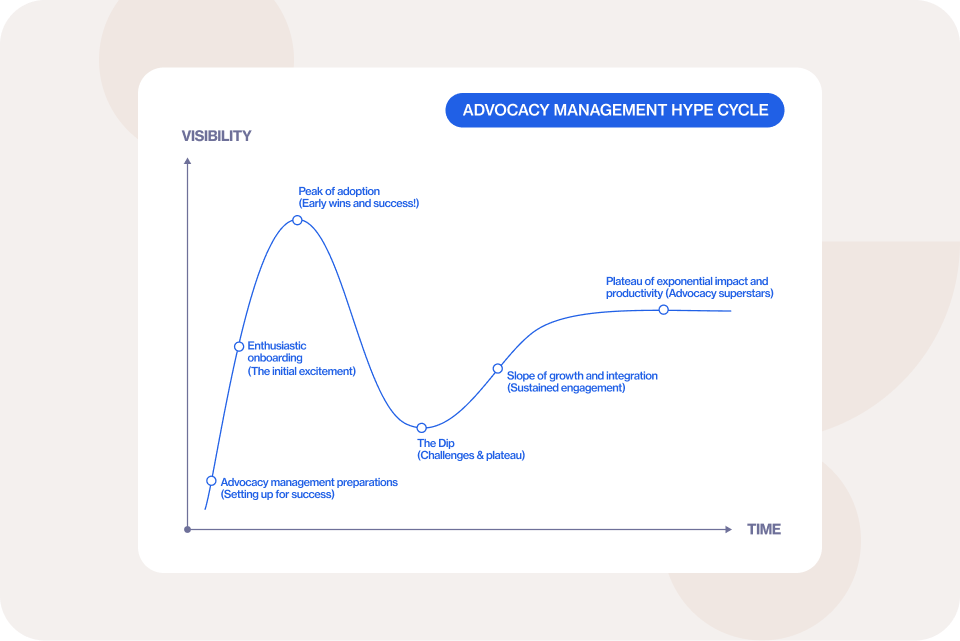
Overcoming employee engagement and employer branding challenges in large enterprises
The engagement gap: Small organizations vs. large enterprises
Unlike smaller organizations, where employee participation is more organic and connected, large enterprises face challenges engaging employees across different locations. To overcome this, companies must use a strategic approach to foster employee engagement, break down silos, and maintain alignment with the cocompany’salues and culture.
The complexity of employer branding in a global enterprise
Building a unified employer brand that resonates across diverse regions can be challenging for large enterprises. Tailor messaging while ensuring the employee advocacy program adapts to local cultures and expectations. Using an employee advocacy platform that allows you to customize content for different regions will make the process more manageable.
Overcoming the challenges of large organizations
- Localize content: Adapt content to resonate with regional audiences.
- Internal communication: Share information about the advocates’ success in creating engagement or in impacting the revenue funnel. Sharing results will make them more engaged.
- Technology: Use an advocacy platform that makes sharing relevant content tailored to different departments and roles easy and with the least friction for your advocates.
When our employee advocates share content through Oktopost, it always resonates much further and generates many more engagements than our corporate feeds. Today, people are far more likely to interact with content when it’s shared by someone they know.
Andrew Davies, Head of Global Digital Marketing, Capco
Summary
Scaling an employee advocacy program in large enterprises amplifies your brand messaging, drives employee engagement, and fosters stronger customer relationships. When you empower employee advocates to share company news and thought leadership content, you can expand your reach and create a truly modern social organization with a presence on social media.
Large enterprises can overcome employee engagement and employer branding challenges using the right employee advocacy platform and software. Review our case studies to learn how to scale your employee advocacy program successfully and start seeing measurable business results.
Download and share with your team
How to drive brand growth in large enterprises with the right employee advocacy platform

